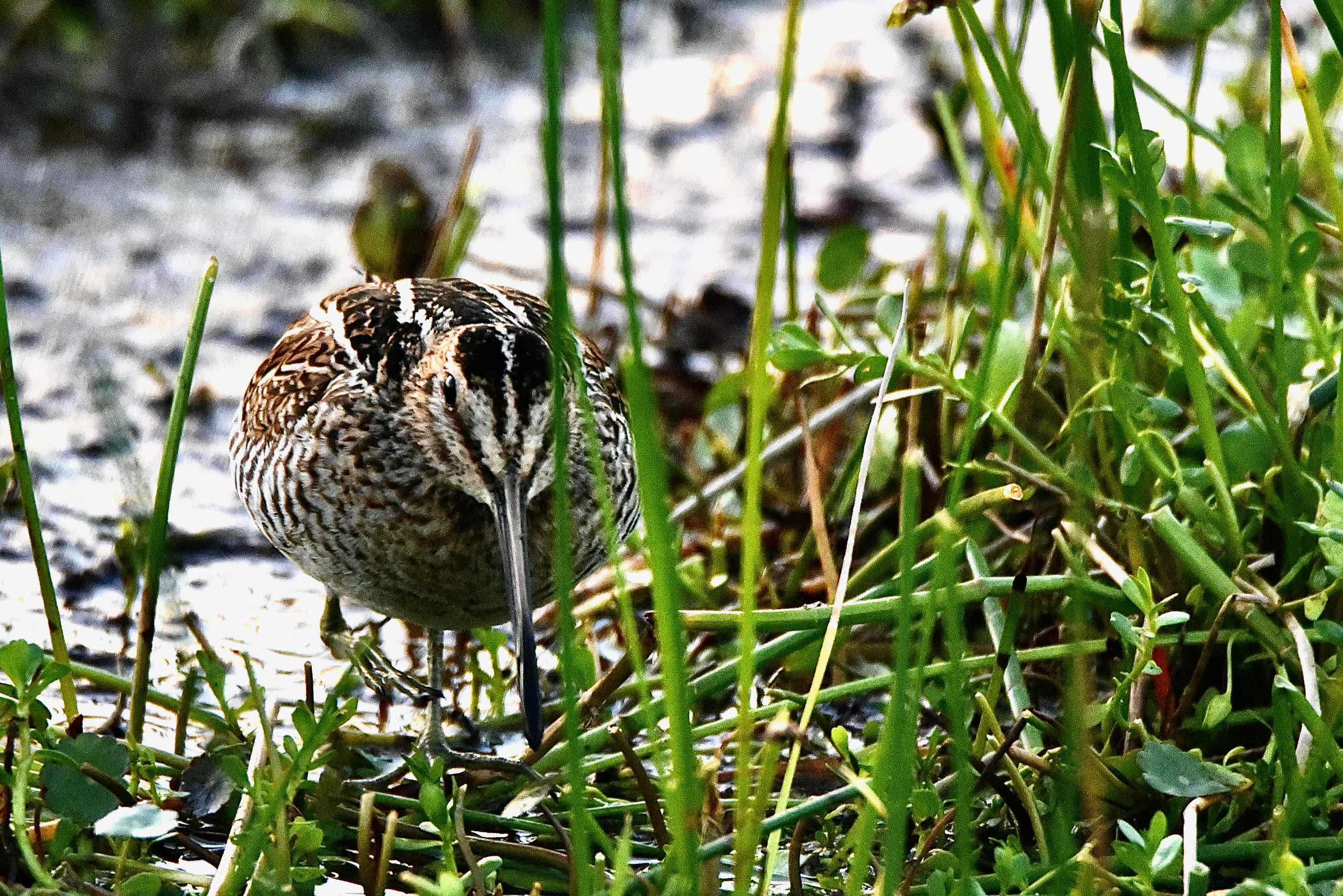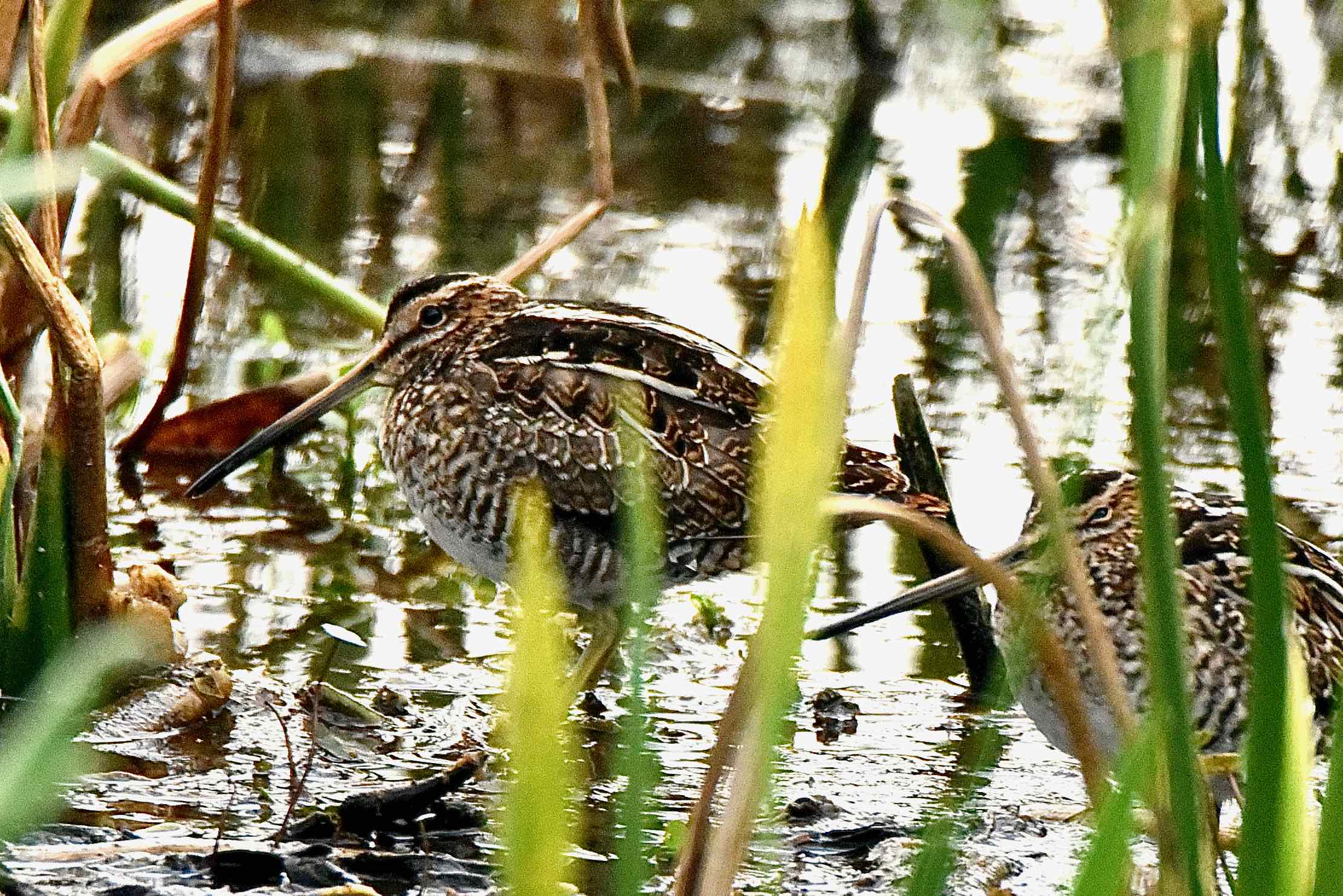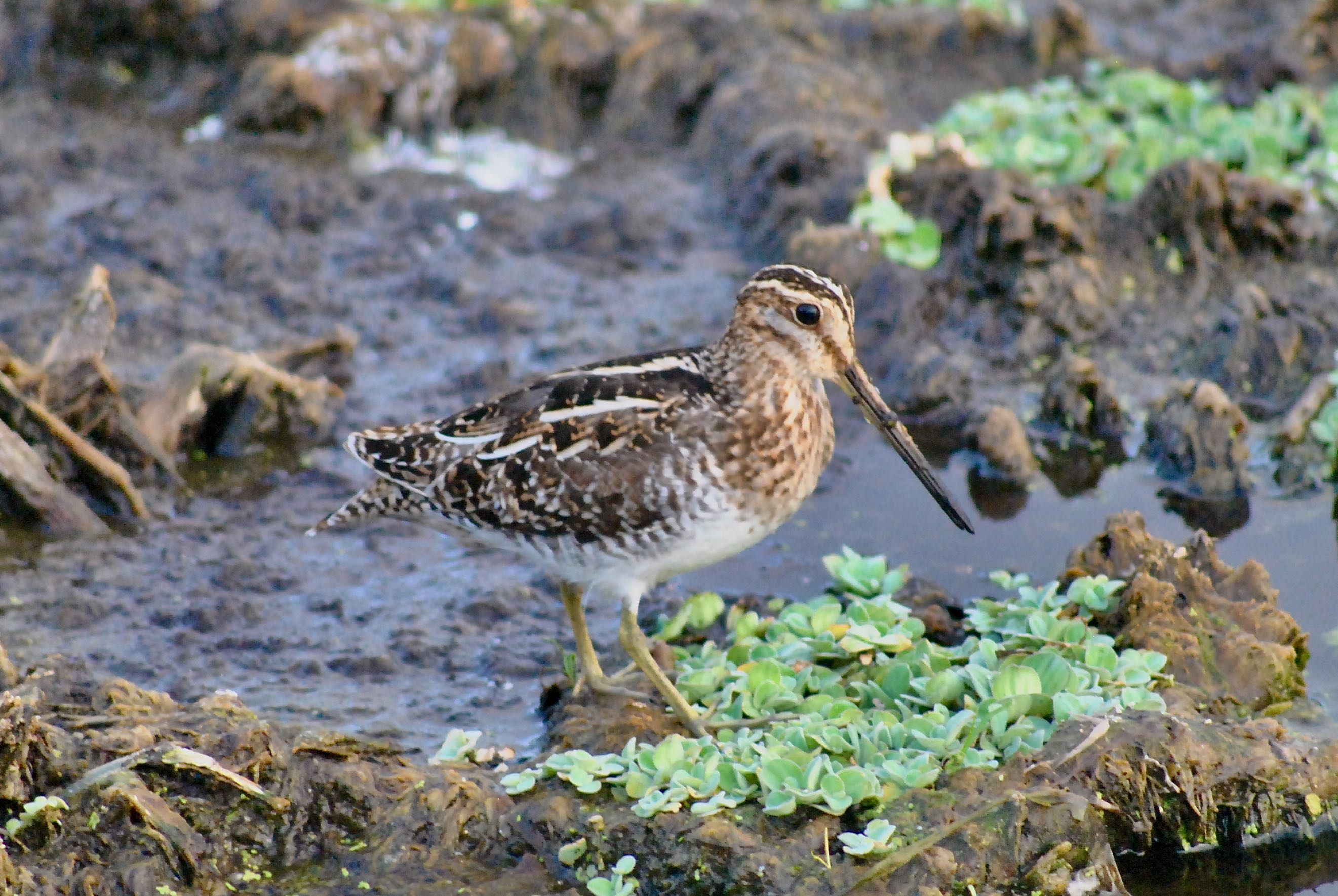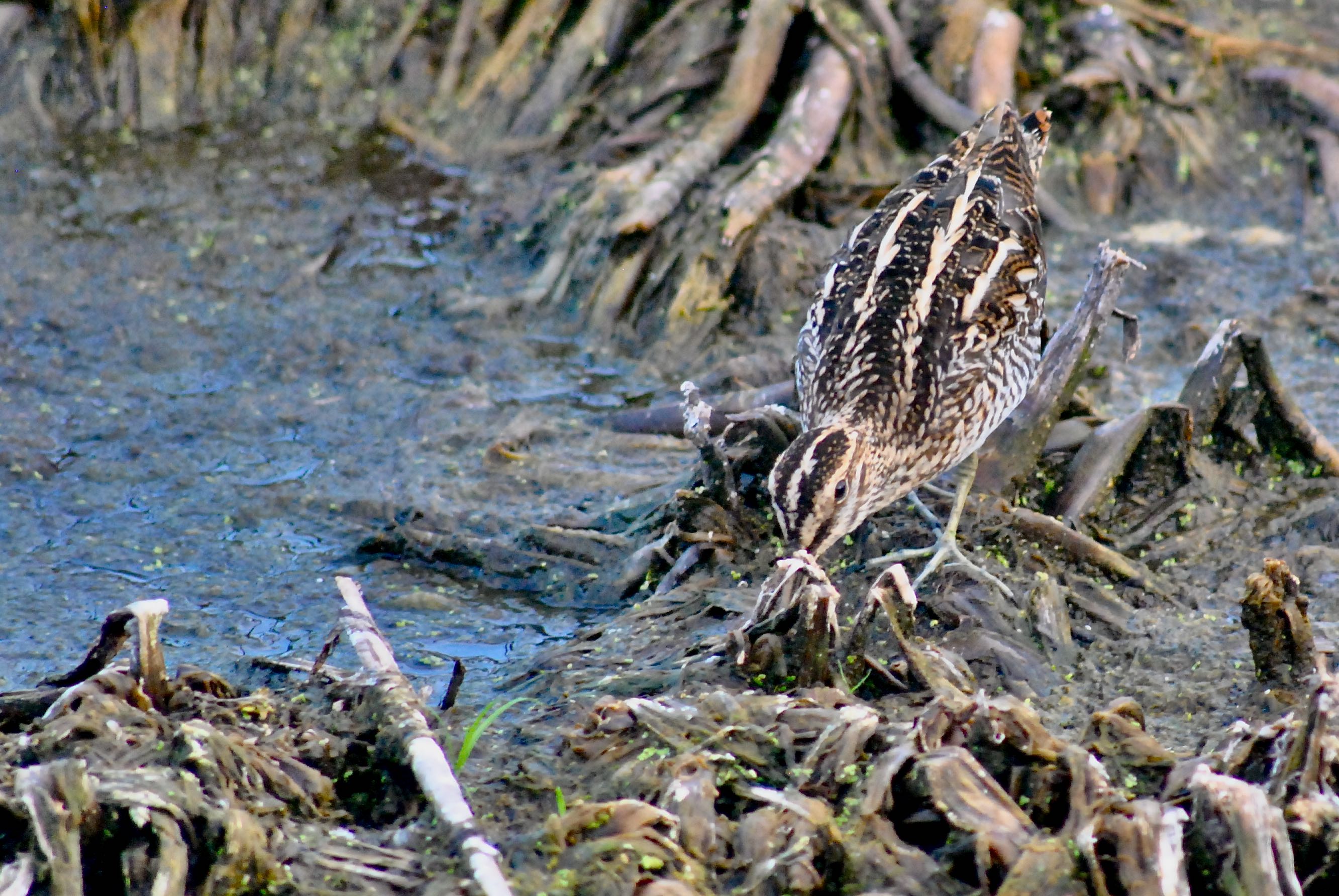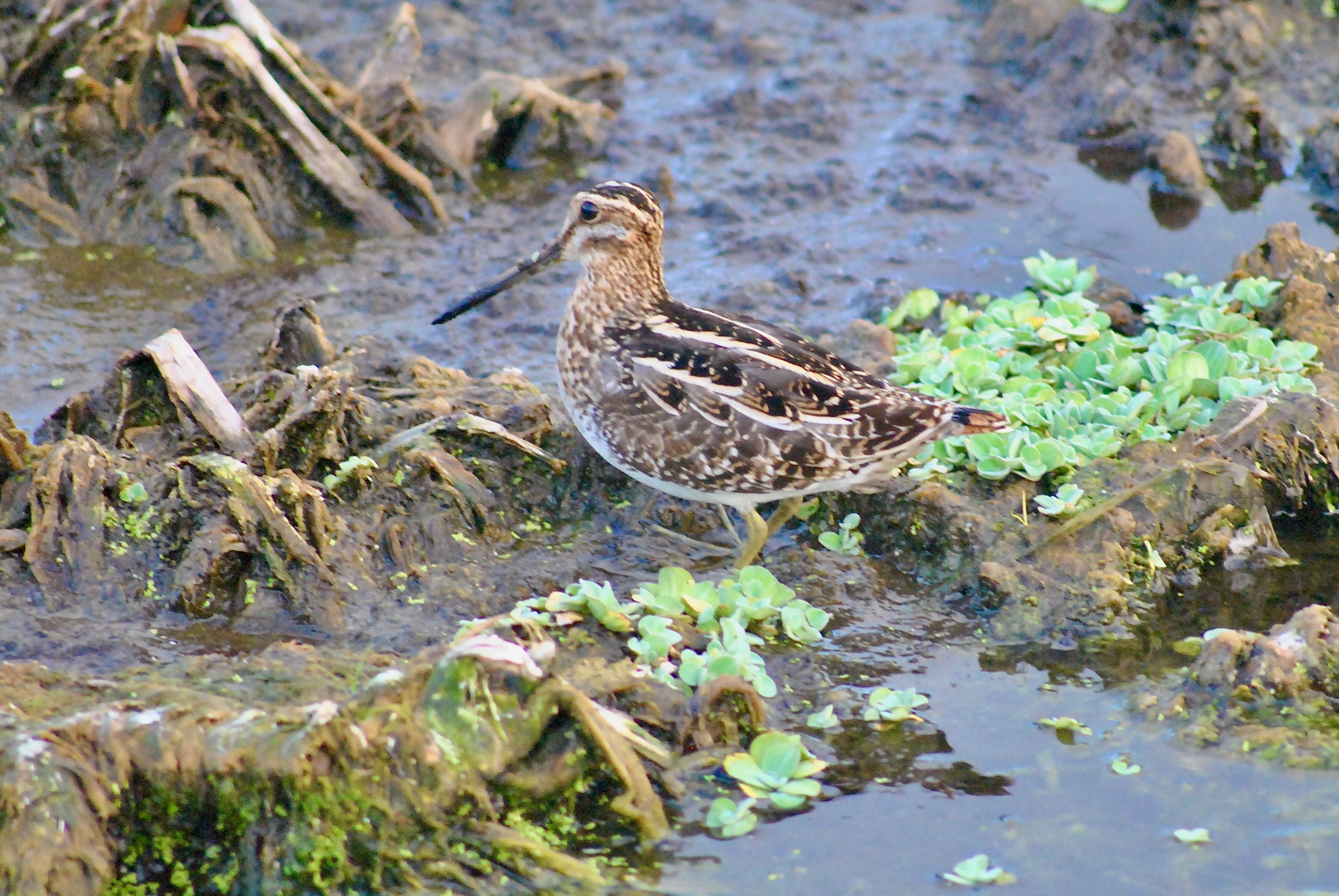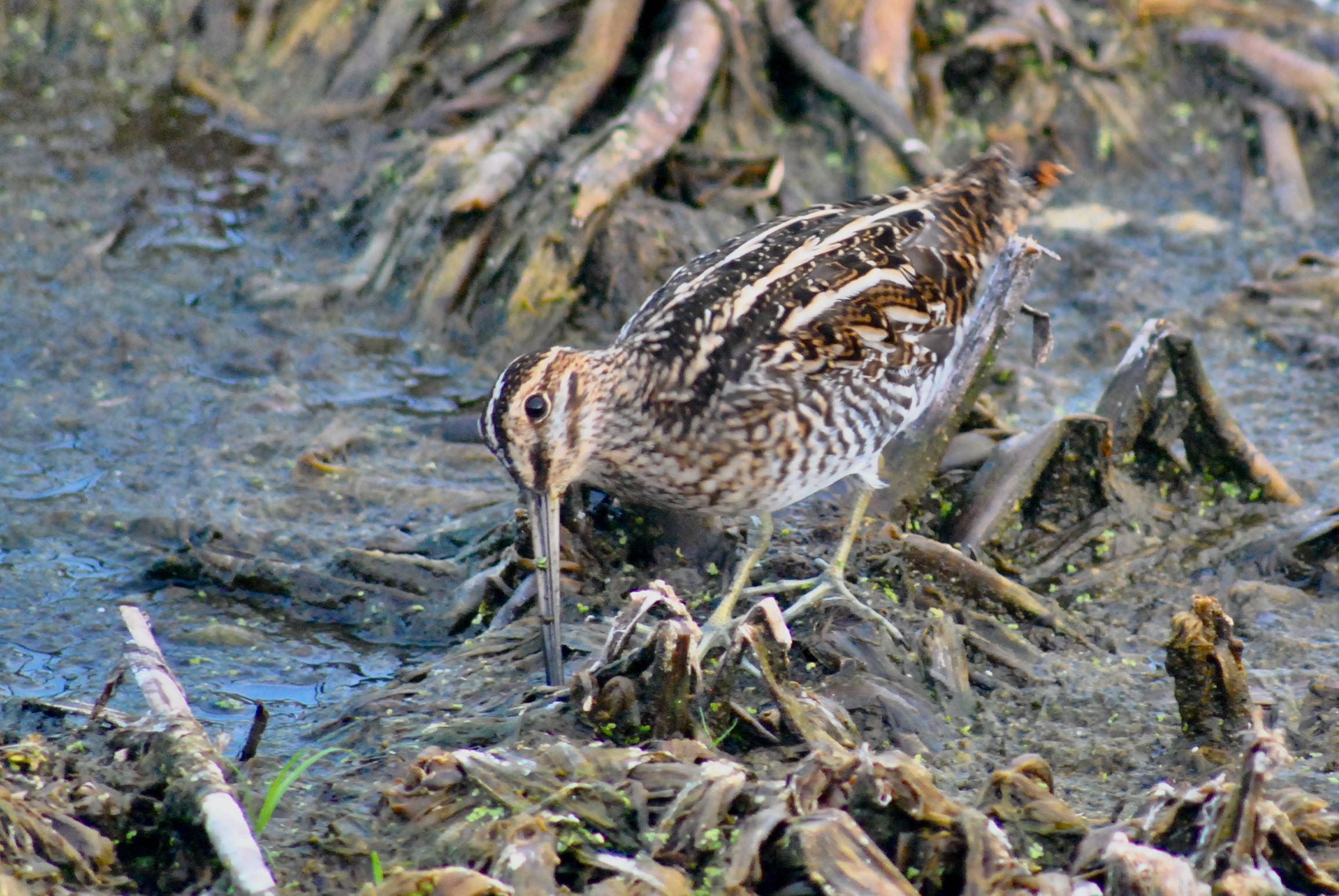
Wilson's snipe, photographed at Green Cay Nature Center, Boynton Beach, Palm Beach County, in April 2013.
Doing a little research on this bird, Wilson's snipe, reminded us of our Boy Scout days, and the initiation ritual known as the snipe hunt. Veteran members of the troop and even a few adult leaders would regale us tenderfoots with stories of hunts past, the methods used and the glories bestowed on those who succeeded in capturing the always elusive creature. Of course, anyone with the least bit of skepticism could sense the stories were pure fiction, all the more obvious by the fact that we never actually saw a snipe. But snipes do exist, and so does snipe hunting.
The Wilson's snipe, Gallinago delicata, is one of the most widespread shorebirds in the Western Hemisphere. It ranges over most of North America, breeding in Alaska and Northern Canada, wintering from the Great Plains southward through Mexico, the Caribbean, Central America and South America to Colombia and Venezuela. Florida is on its itinerary. It's also found year-round in the Pacific Northwest and parts of the Rockies.
It is a winter-time resident of South Florida, where it makes its home in shallow water and mud flats. We've seen them at the Green Cay Nature Center in Boynton Beach during late winter or early spring when water levels are low.
They're well camouflaged, making them difficult to spot, especially because they tend to hang out in dense vegetation where they blend in. It doesn't help that they're most active at dawn and dusk, while sleeping during the day. The most prominent feature of the bird is the long bill, which it uses to probe the ground for worms and other invertebrates. It also eats a variety of bugs and occasionally frogs, lizards and fish. Wilson's snipes can be a foot long, with a wingspan of 17 inches, or more. Particularly large pectoral (breast) muscles give Wilson's snipes a stocky look.
They might look slow, but those thick muscles enable the bird to fly at speeds of 60 mph. Its body is mottled brown, with distinctive black markings. The head is round, with thick dark lines and deep-set eyes that allow the bird to see predators approaching from either front or back. Females "build" the nest by scraping out a shallow hole in the ground and lining it first with coarse grass, then with finer grass. They lay as many as four eggs take about three weeks to incubate. Once hatched, the young are out and about within a day. Females attend to the young until it's time to head south, when the male will take the oldest offspring and the female the youngest.
If you paid any attention to the movies of 2015, you've undoubtedly heard of American Sniper. The term sniper originated with 18th century Brtish soldiers, who would hunt the bird. So yes, snipe hunts are real.
A quick taxonomic note: Wilson's snipes were formerly known as common snipes, with the scientific name, Gallinago gallinago, with a range that included Europe, Asia and Africa as well as North America. In 2003, the North American snipe was determined to be a separate species and called Wilson's, commemorating the great American ornithologist, Alexander Wilson. Wilson's snipes are members of Scolopidae, the sandpiper family.
Post Note No. 1: You might have heard in 2023 that the American Ornithological Association was debating whether to change the common names of any bird that carries the moniker of a human being, just in case said human being had something negative in his/her past. The first bird that came to mind was Wilson's snipe, though we not aware of anything objectionable in Wilson's past. We'll see what happens and update this page if a change is made.
A footnote to the Post Note: The other name that comes quickly to mind is James Audubon, as in Audubon Society. His name has been attached to the crested carara and a subspecies of the yellow-rumped warbler.
Post Note No. 2: We've seen Wilson's snipes in abundance at Green Cay Nature Center this winter for the first time since the photos on this page were taken 11 years ago. Doesn't mean they haven't been there, just that we haven't seen them. In any case, they've became a bit of an attractionn for photographers and bird watchers. We've added photos from this season's bunch.
Green Cay Nature Center

